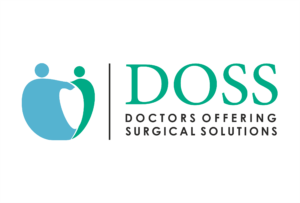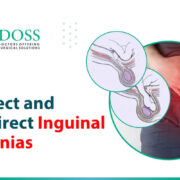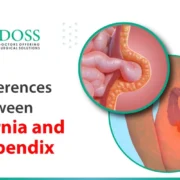Robotic Surgery Explained: Advancements, Differences, and Patient Benefits
BlogHello! My name is Dr. Neeraj Rayate, and I am a laparoscopic and robotic gastrointestinal and bariatric surgeon. Today, I am excited to delve into the fascinating world of robotic surgery, addressing the questions many of you have raised. This article aims to provide a detailed understanding of robotic surgery, its differences from other surgical techniques, and its unique advantages, especially for patients.

What is Robotic Surgery?
Robotic surgery, also known as robot-assisted surgery, involves surgeons using robotic systems to perform complex procedures with greater precision. Despite its name, the robot does not perform the surgery independently.
Instead, it’s a tool that surgeons control, enhancing their ability to perform intricate movements. This technology combines the benefits of traditional laparoscopic surgery with cutting-edge advancements, providing a minimally invasive solution with enhanced capabilities.
Difference Between Robotic, Laparoscopic, and Open Surgery
1.Open Surgery: Traditionally, open surgery involves making large incisions to access the surgical area. While effective, it often requires longer recovery times and larger scars.
2.Laparoscopic Surgery: This approach reduces the need for large incisions by using small cuts through which a camera and instruments are inserted. The surgeon uses these tools manually, guided by a two-dimensional view on a monitor.
3.Robotic Surgery: Similar to laparoscopic surgery in terms of incision size, robotic surgery offers a three-dimensional view and enhanced depth perception. Surgeons operate via a console, controlling robotic arms that provide exceptional precision and stability, akin to using a fine-tuned instrument.
Key Components of Robotic Surgery
Robotic surgery comprises three main components:
- Surgeon Console: Where the surgeon sits and controls the robotic arms with joysticks.
- Patient Cart: Positioned alongside the patient, it holds the robotic arms that perform the surgery.
- Vision System: Provides a high-definition, magnified 3D view of the surgical area, enhancing the surgeon’s ability to see and operate on delicate tissues.
Advantages of Robotic Surgery
- Enhanced Precision: The robotic system allows for finer control and accuracy, essential for complex surgeries. This precision is comparable to sewing with a machine versus hand stitching, ensuring neater and more reliable results.
- Improved Recovery: With smaller incisions and less trauma to the body, patients experience faster recovery times. This can be likened to traveling by bullet train instead of a conventional train—quicker and more efficient.
- Superior Visualization: The 3D vision system offers a better understanding of the surgical field, providing inherent depth perception and magnification, which are crucial for precise surgical outcomes.
- Minimized Scarring: The minimally invasive nature of robotic surgery means reduced scarring and less postoperative pain, contributing to quicker return to normal activities.
Patient-Centric Benefits
Robotic surgery is particularly beneficial for patients requiring complex procedures or those who prioritize rapid recovery. The technological advancements ensure that surgeries are conducted with maximum precision, directly impacting patient outcomes positively. The use of robotic systems often translates to shorter hospital stays, reduced pain, and quicker return to daily life, making it a preferred choice for many.
Conclusion
Robotic surgery represents a significant leap forward in surgical technology, offering unparalleled precision and faster recovery times. While the technology may initially seem daunting, understanding its benefits can reassure patients of its advantages over traditional methods. As we continue to explore robotic surgery’s potential, future discussions will cover the specific surgeries performed using this technology and the detailed benefits for patients.
Discover the transformative benefits of robotic surgery with Dr. Neeraj Rayate, Pune’s leading specialist in laparoscopic and robotic gastrointestinal and bariatric surgery. Benefit from unparalleled precision, faster recovery, and minimized scarring. Schedule a consultation today to learn how this advanced technology can make your surgery safer and more efficient.


 +919011100010
+919011100010 



















